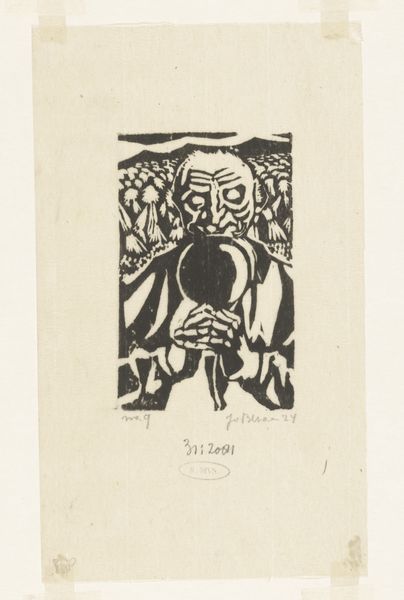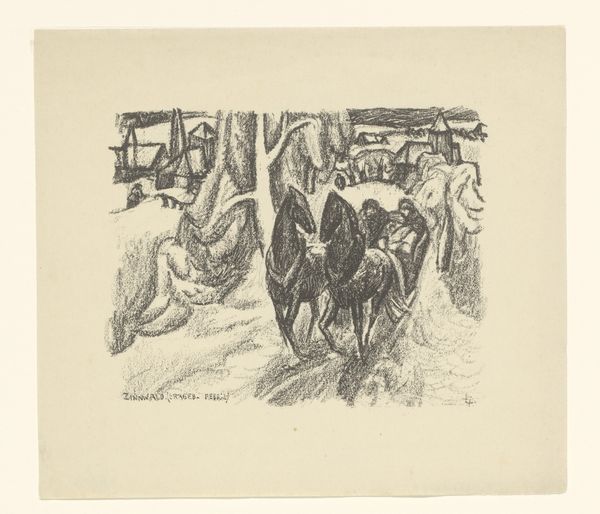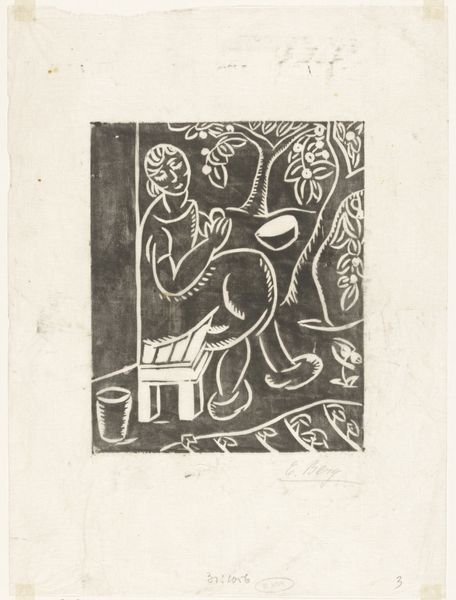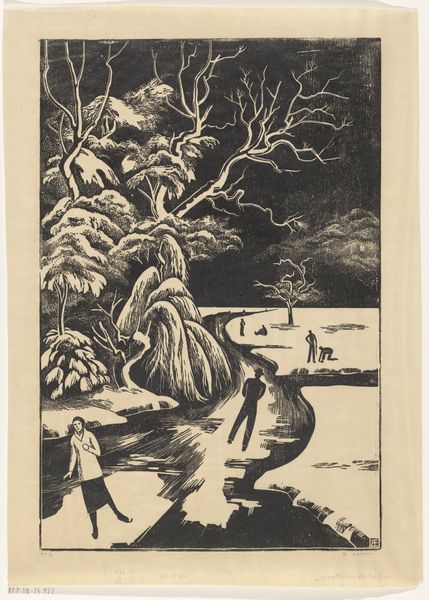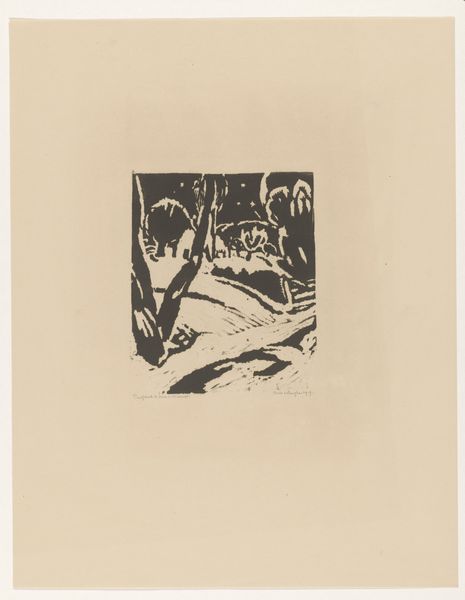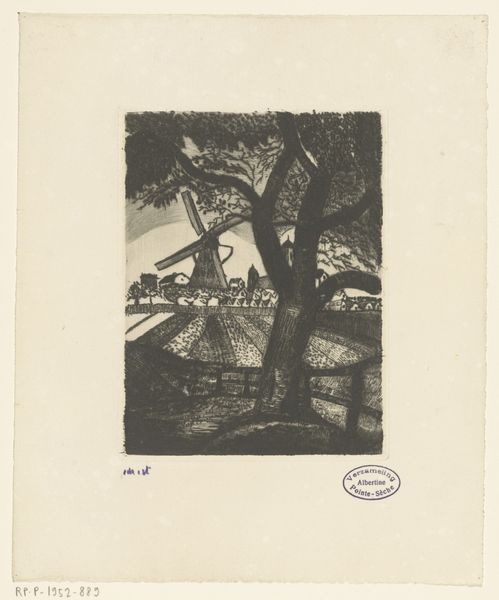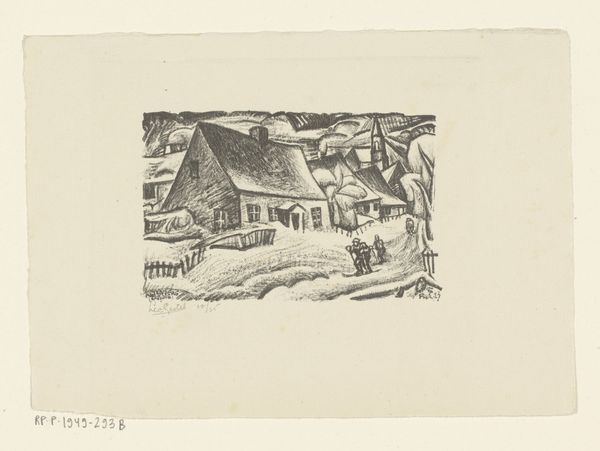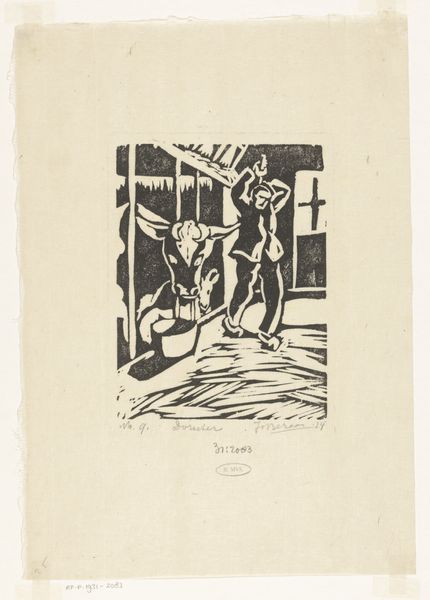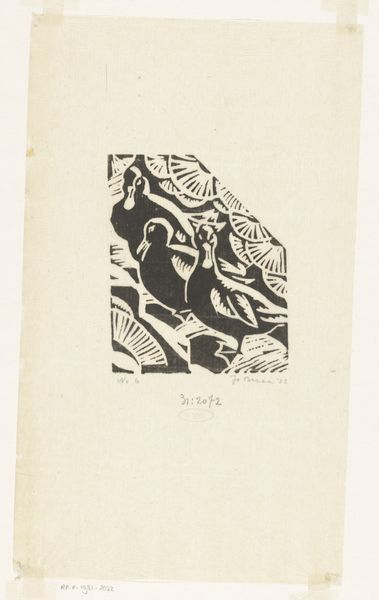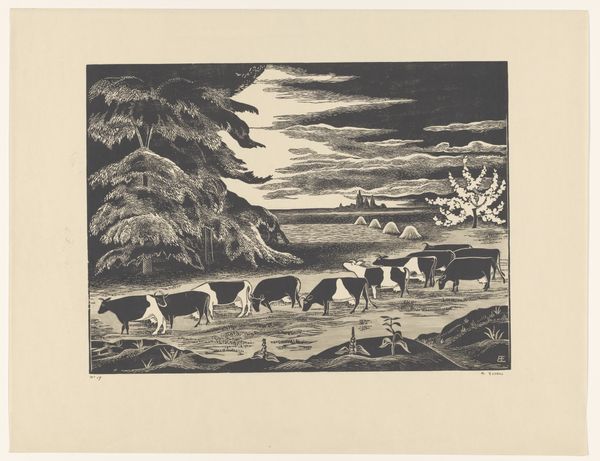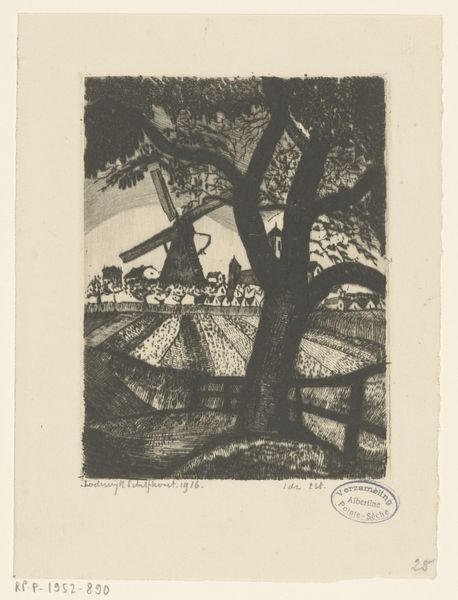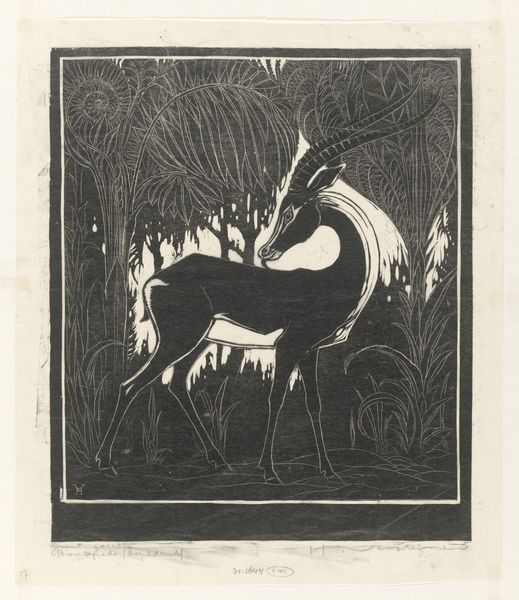
print, woodcut
# print
#
landscape
#
figuration
#
woodcut
#
horse
Dimensions: height 155 mm, width 150 mm, height 319 mm, width 220 mm
Copyright: Rijks Museum: Open Domain
Editor: Here we have "Paard in de wei" (Horse in the Meadow), a woodcut print from 1923 by Jo Bezaan, residing in the Rijksmuseum. I find the stark black and white creates such a compelling composition; the flat planes create an intriguing sense of depth and shadow. What jumps out to you? Curator: It is the interplay of positive and negative space that truly dictates the reading of the image. The very economy of the woodcut medium forces a certain simplification, allowing for the emphasis of formal elements like line and shape. Notice how the repetitive vertical marks indicating the trees contrast against the solid form of the horse, which anchors the composition. Editor: So, it’s less about the 'horse in a meadow' and more about how those shapes interact? Curator: Precisely. We observe the visual rhythms established through the repetition of forms: the clustered leaf shapes echoing the horse's curved back, the horizon implied through carefully placed negative space. Consider how the solid black rectangle at the top destabilizes perspective and heightens awareness of the picture plane. Can we agree on how these strategic compositional elements contribute to the overall impact? Editor: Yes, I see it now. The balance of textures – solid, hatched, blank – keeps the eye moving. But does that choice to limit depth create tension, or is it meant to evoke a specific feeling? Curator: The simplification transcends literal depiction to focus on formal relationships. The visual interplay establishes the significance of its structure as an element of significance and visual tension. Editor: That’s fascinating. I came in seeing a horse, and now I appreciate how the composition itself communicates more than any realistic depiction could. Thanks for broadening my perspective. Curator: Indeed. The reduction to essential forms grants access to a sophisticated engagement with visual language. Thank you for helping unpack that.
Comments
No comments
Be the first to comment and join the conversation on the ultimate creative platform.
